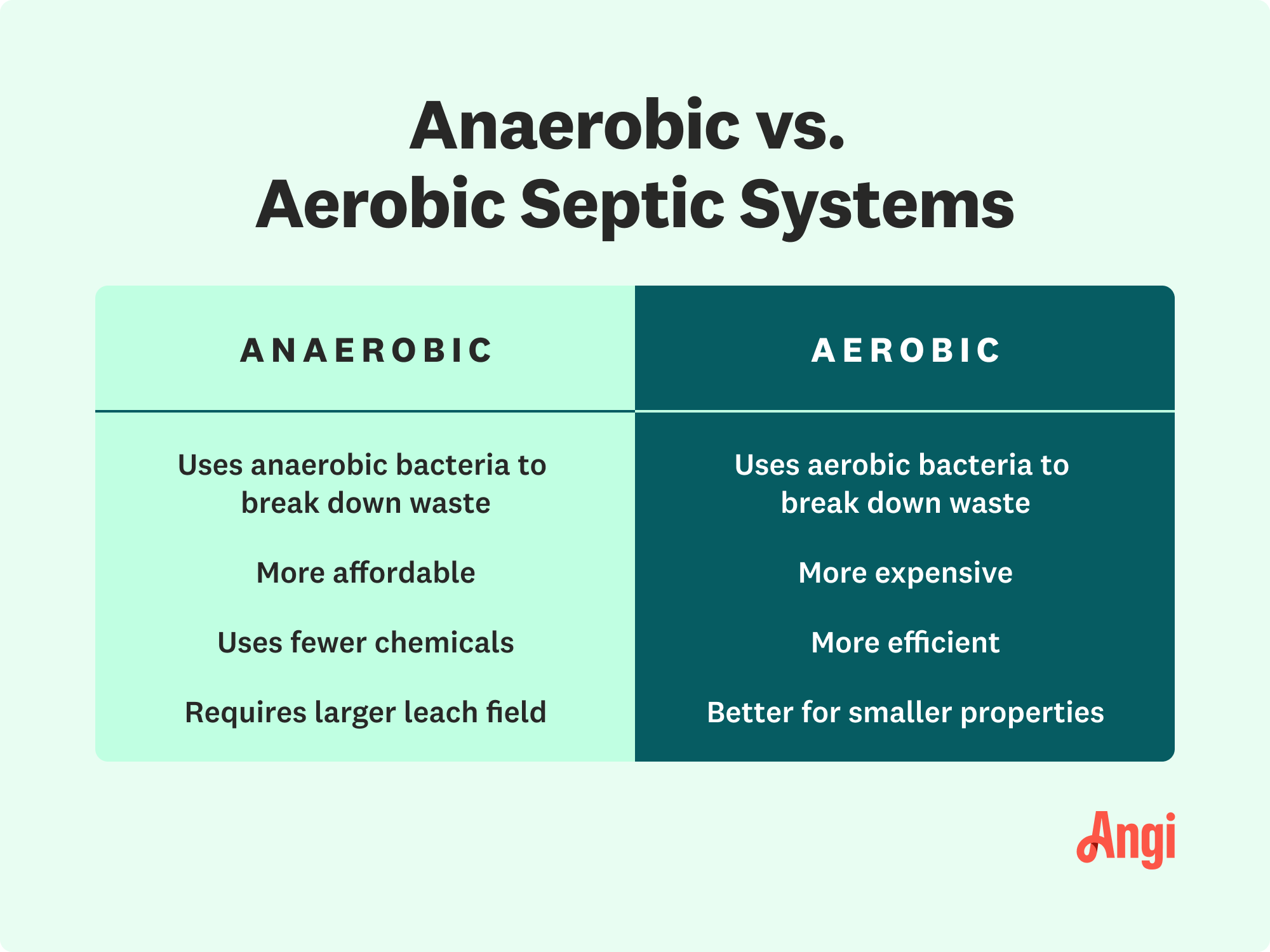If you’re considering installing an aerobic septic system but are unsure about the potential costs, look no further! This article aims to shed some light on the expenses associated with aerobic septic systems, giving you a clearer idea of what to expect. From installation fees to regular maintenance costs, we’ll break down the numbers and provide you with valuable insights to help you make an informed decision. So, let’s dive into the world of aerobic septic systems and explore the financial aspects of this essential home infrastructure.
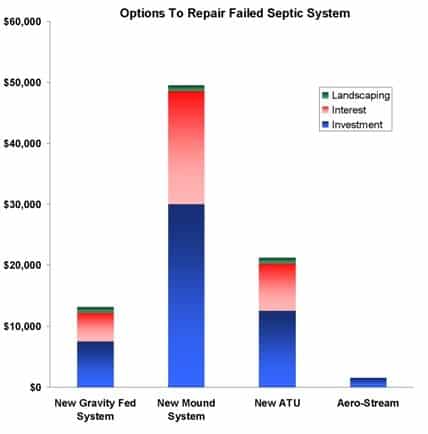
Permit and Installation Costs
When it comes to installing an aerobic septic system, there are several costs to consider. The first major expense is obtaining the necessary permits. Permit fees can vary depending on your location and the specific requirements of your local government or regulatory agency. It’s essential to research the permits needed in your area and factor in the associated costs when planning your budget.
In addition to permits, labor costs are another significant consideration. Hiring a professional to install an aerobic septic system ensures that the job is done correctly and according to all applicable regulations. The labor costs can vary depending on the complexity of the installation and the local rate for septic system installation services. It’s always a good idea to get multiple quotes from reputable contractors to compare prices and ensure you’re getting a fair deal.
Equipment rental is another cost to consider when installing an aerobic septic system. Excavation equipment, such as backhoes or mini excavators, may be necessary to dig the required trenches and holes for the system. Renting the equipment can save you money compared to purchasing it outright, but it’s important to include these rental costs in your budget.
Septic Tank Costs
The cost of the septic tank itself is a significant expense when installing an aerobic septic system. Several factors can influence the price of the tank, including its size and the material used for construction. Larger tanks typically cost more than smaller ones due to the additional materials required. Additionally, tanks made from more durable materials, such as fiberglass or concrete, may have a higher price tag than those made from plastic.
Delivery and installation costs should also be factored into your budget when considering the overall cost of a septic tank. Shipping a heavy tank can be expensive, so it’s important to inquire about delivery fees before making a purchase. The installation process will also require professional expertise, which may incur additional labor costs.
Aerobic Treatment Unit Costs
The aerobic treatment unit (ATU) is a crucial component of an aerobic septic system. The cost of an ATU can vary based on its size and capacity. Larger units capable of treating larger volumes of wastewater may be more expensive than smaller units designed for residential use.
The brand and quality of the ATU will also impact its cost. Just like with any other product, higher-quality and more reputable brands tend to come with a higher price tag. It’s essential to research different brands and read customer reviews to ensure you’re investing in a reliable and efficient ATU that suits your needs.
Another cost to consider is the electrical requirements of the ATU. Some units may require additional electrical work to be done during installation, which could increase the overall cost. It’s important to consult a professional electrician to ensure the electrical needs of the ATU are met.
Installation and maintenance costs should also be factored into your budget. Like the septic tank, the ATU will need to be properly installed by a professional to ensure its effective operation. Ongoing maintenance, such as regular inspections and cleaning, will also incur additional costs that should be accounted for.
Additional Components and Accessories
In addition to the septic tank and ATU, there are several additional components and accessories that may be required for an effective aerobic septic system. These components include a distribution box, pump chamber, control panel, and alarm system.
The distribution box is responsible for evenly distributing the treated wastewater to the drain field. The cost of a distribution box can vary depending on its size and material. PVC distribution boxes are generally less expensive than those made from concrete.
The pump chamber is necessary if the drain field is located at a higher elevation than the septic tank. It pumps the treated wastewater to the drain field, ensuring proper distribution. The cost of a pump chamber can vary based on its size and the specific requirements of your system.
A control panel is used to monitor and control the operation of the aerobic septic system. It ensures that the system is functioning correctly and alerts you to any potential issues. The cost of a control panel can vary depending on its features and complexity.
An alarm system is often included to alert you to any malfunctions or high water levels in the septic system. This additional safety feature can provide peace of mind but may add to the overall cost of the system.
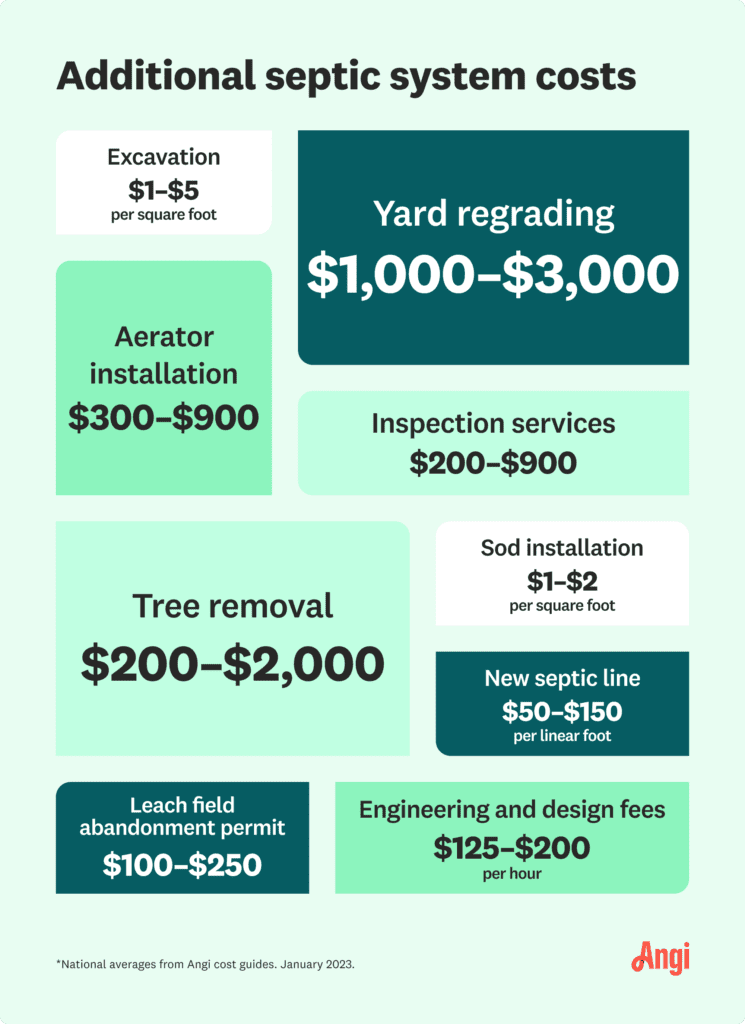
Maintenance and Repair Costs
To keep an aerobic septic system functioning properly, regular maintenance and occasional repairs are necessary. These costs should be taken into account when budgeting for your system.
Pumping and cleaning the septic tank is one of the most crucial maintenance tasks. Over time, solids can accumulate in the tank, requiring it to be pumped out by a professional septic service provider. The frequency of pumping depends on the size of the tank and the number of occupants in your home. It’s generally recommended to have the tank pumped every three to five years.
Filter replacements are another maintenance cost to consider. Aerobic septic systems often have filters to remove debris and solids from the wastewater before it enters the drain field. These filters may need to be replaced periodically to ensure the system operates efficiently.
Maintenance of the aeration system, if present in your aerobic septic system, is another potential expense. The aeration system helps facilitate the breakdown of organic matter in the wastewater. Regular inspections and cleaning may be necessary to maintain optimal performance.
Inevitably, repairs may be required over the lifespan of your aerobic septic system. Components such as pumps, motors, or control panels may need to be repaired or replaced. It’s important to budget for these unexpected expenses to ensure the long-term functionality of your system.
Operational Costs
In addition to the upfront costs of installation and maintenance, there are operational costs associated with running an aerobic septic system. These costs include electricity consumption and expenses related to chemical and microbial additives.
An aerobic septic system requires electricity to power the ATU, control panel, and any other electrical components. The amount of electricity consumed will depend on the size and efficiency of your system. It’s important to factor in the ongoing cost of electricity when budgeting for your system.
Chemical and microbial additives may be required to enhance the treatment process and maintain the health of the system. These additives can help break down solids and promote the growth of beneficial bacteria. The cost of these additives will vary depending on the brand and quantity needed.
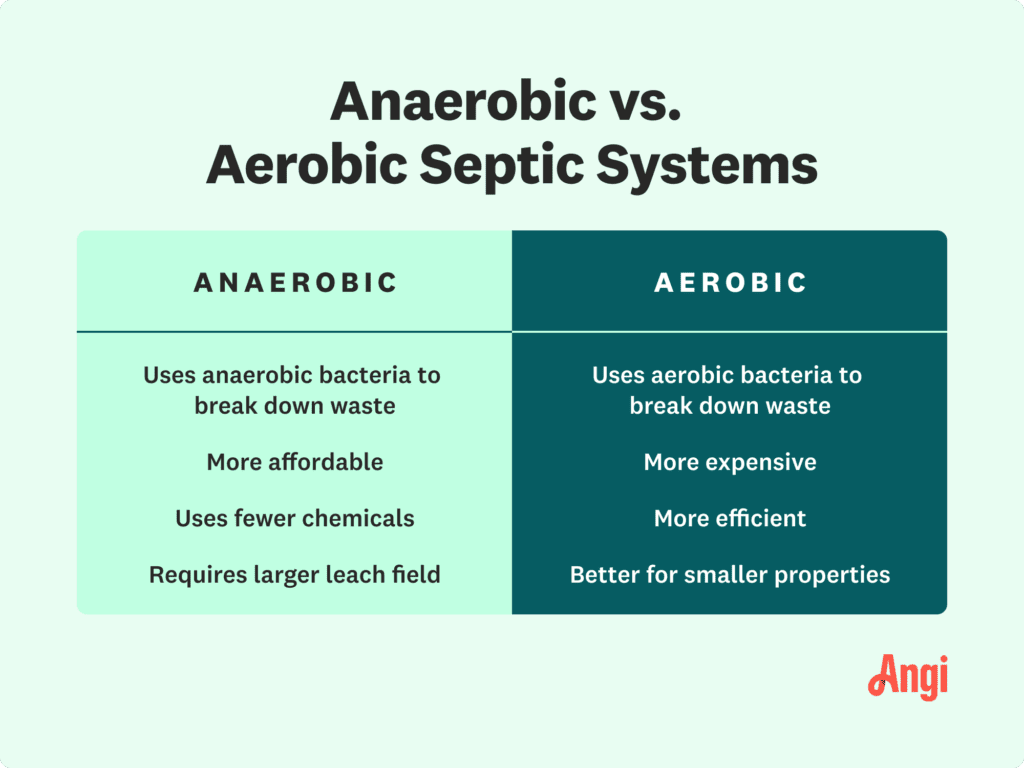
Long-Term Costs
When considering the cost of an aerobic septic system, it’s important to also consider the long-term expenses associated with its operation and maintenance.
Permit renewals and inspections are ongoing costs that need to be factored into your budget. Many jurisdictions require septic systems to be inspected periodically to ensure compliance with local regulations. Additionally, permits may need to be renewed regularly, which may incur fees.
Ongoing maintenance and repairs are inevitable costs when owning an aerobic septic system. Regular inspections, pumping, cleaning, and filter replacements are necessary for the system to function properly. It’s important to budget for these routine maintenance tasks to prevent more significant problems down the road.
Eventually, major components of the system may need to be replaced. The septic tank, ATU, or other essential parts may have a limited lifespan and require replacement. It’s important to consider these potential replacement costs when weighing the long-term financial commitment to an aerobic septic system.
Geographical Variation in Costs
The cost of installing and maintaining an aerobic septic system can vary depending on your geographic location. Several factors can influence these regional price differences.
Regional price differences can arise due to variations in labor costs, material availability, and market demand. Areas with a higher cost of living or a scarcity of professionals experienced in installing aerobic systems may have higher labor costs. Similarly, limited access to specific materials or higher transportation costs can impact the overall price of the system.
State or local regulations can also influence the cost of an aerobic septic system. Each jurisdiction may have different requirements and standards for septic system installations. These regulations may dictate the type of system allowed or require additional steps in the installation process. Compliance with these regulations may incur additional costs.
When budgeting for an aerobic septic system, it’s important to research and understand the specific cost factors in your region. Consulting with local professionals or contacting your local regulatory agency can provide valuable insight into the potential costs involved.
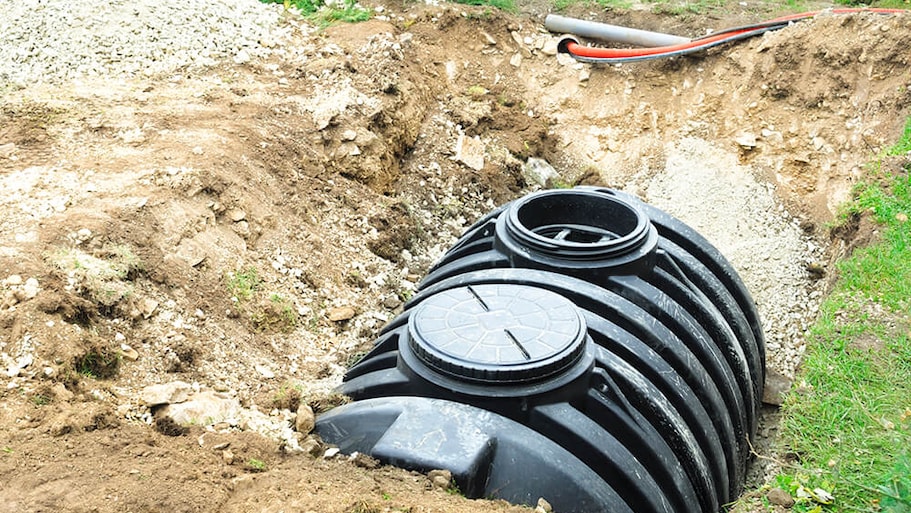
Financing Options
Recognizing that the cost of installing and maintaining an aerobic septic system can be significant, there are various financing options available to help homeowners manage these expenses.
Government assistance programs may offer financial assistance or tax incentives to encourage the installation of aerobic septic systems. These programs can help offset some of the upfront costs, making the system more affordable for homeowners.
Loan options, such as home improvement loans or personal loans, can provide funding for the installation or repair of an aerobic septic system. It’s important to compare different loan options and consider the interest rates and repayment terms before committing to any particular loan.
Insurance coverage is another avenue to explore when considering financing options. Some homeowners’ insurance policies may include coverage for septic system repairs or damage. Reviewing your existing insurance policies or contacting insurance providers can help determine if any coverage is available.
Return on Investment
While an aerobic septic system can be a significant expense, there are potential benefits and returns on investment to consider.
One potential saving is on water bills. Unlike traditional septic systems that rely solely on passive filtration and drainage, aerobic septic systems treat wastewater more thoroughly, reducing the amount of water wasted. This can result in lower water bills over time, as less water is required for a properly functioning aerobic system.
Furthermore, an aerobic septic system can increase the value of your property. Having a reliable and efficient septic system in place can be a selling point for potential buyers. It can also be advantageous if you plan to refinance or use your property as collateral for a loan.
It’s crucial to consider these potential cost savings and the long-term benefits when evaluating the overall expense of an aerobic septic system. While the upfront costs may seem significant, the return on investment can make it a worthwhile investment for homeowners.

